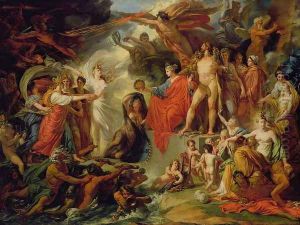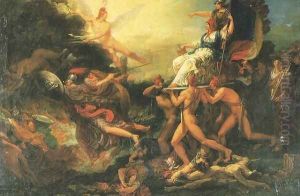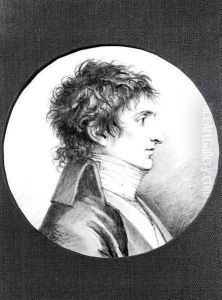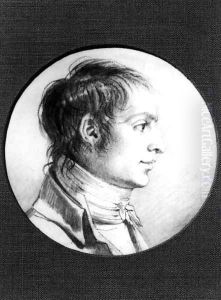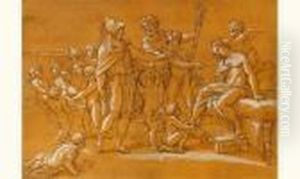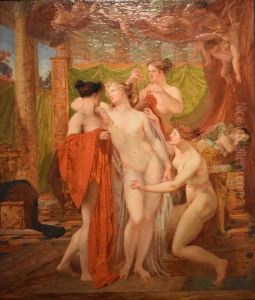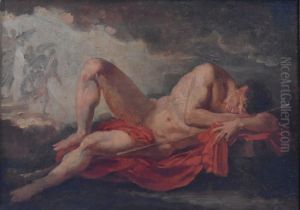Jacques Reattu Paintings
Jacques Réattu was a notable French painter born on August 3, 1760, in Arles. He grew up in a time of great social and political upheaval that coincided with the French Revolution and the Napoleonic Wars. Réattu began his artistic journey under the guidance of his uncle, the painter Antoine Raspal, but he later moved to Paris to further his education and career. In the French capital, he studied under the prominent history painter Jacques-Louis David, who was a significant influence on the young artist.
Réattu's talent was recognized early on when he won the prestigious Prix de Rome in 1791 for his painting 'Regulus Returning to Carthage'. The Prix de Rome was a French scholarship for arts students, primarily painters and sculptors, that was established during the reign of Louis XIV. Winners were awarded a bursary that allowed them to stay in Rome for three to five years at the expense of the state. The time Réattu spent in Rome greatly influenced his style, which incorporated the neoclassical elements that dominated the period.
During the French Revolution, Réattu returned to Arles and became involved in local politics while continuing to pursue his art. He produced portraits, allegorical works, and historical pieces that reflected the turbulent times and his own revolutionary sympathies. Réattu was also known for his interest in the human figure, and his later works often focused on studies of anatomy and the portrayal of the human body in motion, a precursor to the Romantic fascination with expression and movement.
Despite the political unrest, Réattu managed to establish a successful career. He became the director of the Arles Museum in 1801 and worked on a series of wall paintings in the town hall of Arles, which was considered one of his major projects. In his later years, he continued to paint and contribute to the cultural life of his hometown.
Jacques Réattu passed away on April 7, 1833, in Arles. His body of work left a lasting impact on the art world, particularly in the context of the French neoclassical movement and its transition towards Romanticism. Réattu’s legacy is preserved in the Réattu Museum (Musée Réattu) in Arles, which houses many of his paintings and drawings, as well as his collections of art and antiquities.
